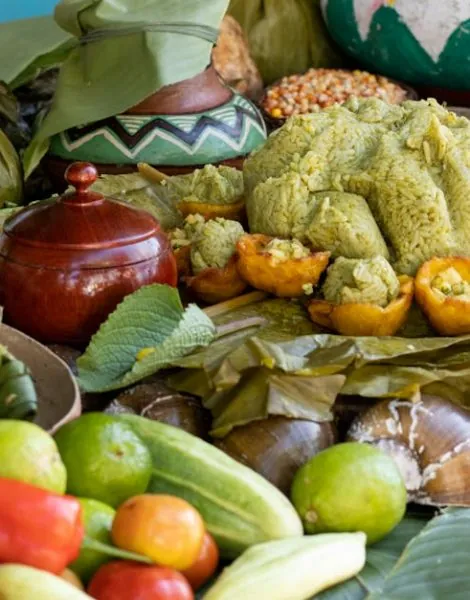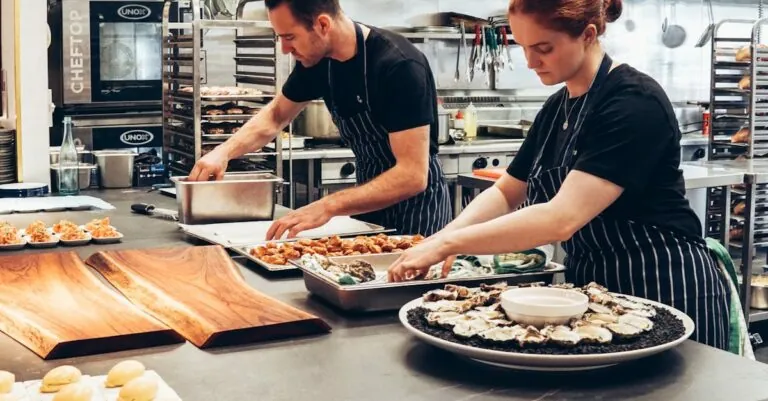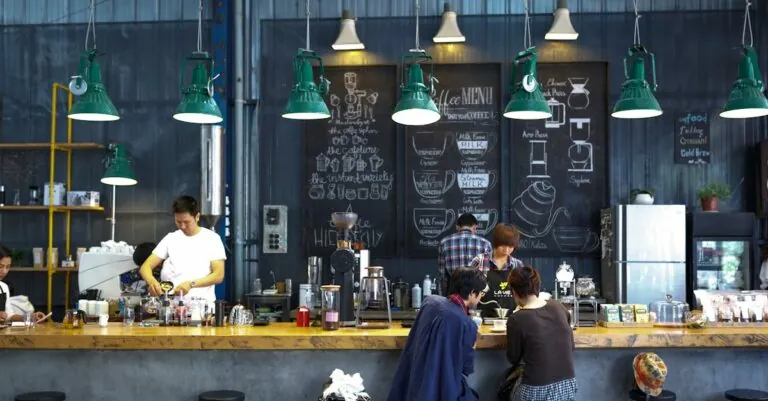Imagine biting into a slice of pizza so good it could make a New Yorker weep or savoring a bowl of gumbo that transports you straight to the streets of New Orleans. Regional food tasting isn’t just a meal; it’s a passport to a world where every dish tells a story. From the spicy kick of Tex-Mex to the sweet allure of Southern desserts, each bite reveals the culture and history of its origin.
Table of Contents
ToggleWhat Is Regional Food Tasting?
Regional food tasting involves sampling dishes specific to a geographic area, showcasing local ingredients and culinary traditions. Dishes reflect the cultural heritage and history of their respective regions. Each taste tells a story, connecting individuals with the landscapes, communities, and farming practices that define the food.
Regional food tasting experiences often include a variety of iconic dishes, such as New York-style pizza, Louisiana gumbo, and Chicago deep-dish pizza. Participants explore flavors and textures unique to each dish, making the tasting experience memorable. Tasting events usually feature multiple courses, allowing individuals to appreciate the diversity of local cuisine.
Often, chefs emphasize seasonal ingredients, making dishes fresh and vibrant. Seasonal foods highlight the connection between the land and its people. Tasting regional specialties enhances an understanding of local customs and cooking techniques.
Experiences can take place at festivals, farmers markets, or dedicated tasting events, providing opportunities to meet local chefs and producers. Sharing dishes encourages conversations around food’s cultural significance. When individuals engage in regional food tasting, they discover hidden gems and culinary traditions that evoke emotions and nostalgia.
Overall, regional food tasting serves as both an exploration and celebration of local flavors, fostering connections among participants and their surroundings. Gastronomic journeys vary widely, offering something unique for every palate. Therefore, attending a food tasting event enriches knowledge and appreciation for regional cuisines.
The Importance of Regional Cuisines
Regional cuisines play a crucial role in defining cultural identities and preserving heritage. Each dish reflects traditions passed down through generations.
Cultural Significance
Cultural heritage thrives through regional cuisines. Cultural narratives intertwine with the preparation and consumption of food. Local dishes symbolize community values and practices. Festivals often celebrate traditional recipes, showcasing local ingredients and cooking techniques. People bond over shared meals, reinforcing social connections and unity. Unique culinary practices highlight the diversity within regions. Recognition of these cuisines fosters appreciation for cultural differences.
Unique Ingredients
Unique ingredients characterize regional cuisines. Local climates and geography cultivate various food sources. For instance, coastal regions feature seafood specialties. Similarly, plains may produce grains and livestock. Each ingredient tells a story of its environment and ecosystem. Farmers markets often provide access to fresh, local produce. Chefs emphasize these ingredients, elevating dishes while honoring their origins. Seasonal ingredients enhance flavors, ensuring every dish reflects its local landscape. Variety among regional ingredients promotes distinctive culinary experiences.
How to Experience Regional Food Tasting
Regional food tasting offers an immersive journey into local cuisines, emphasizing unique flavors and cultural narratives. Engaging with local culinary experiences enhances the understanding of the region’s heritage.
Finding Local Venues
Discovering local venues promotes a deeper connection to regional food tasting. Farmers markets frequently showcase seasonal produce and artisanal products, engaging chefs and producers during festivals. Community centers may host tasting events, encouraging interaction between locals and visitors. Restaurants often feature regional specialties, allowing diners to experience traditional dishes in context. Researching online or utilizing apps can reveal nearby establishments that emphasize local ingredients. Participating in pop-up events fosters a vibrant atmosphere while supporting local economies. Exploring food trucks, which often offer authentic, regional fare, enhances the tasting journey.
Participating in Food Tours
Participating in food tours provides a curated experience of regional cuisine. These guided excursions enable individuals to sample diverse dishes while learning about culinary history. Local guides often share insider knowledge, uncovering hidden gems within the community. Tours frequently include stops at restaurants, markets, and specialty shops, showcasing various flavors and cooking techniques. Engaging with chefs and artisans during tastings bridges gaps between producers and consumers. Group settings enhance the experience, promoting shared conversations about food and culture. Choosing small, intimate tours often leads to more personalized interactions and deeper insights into the local culinary scene.
Popular Regions for Food Tasting
Numerous regions around the world are renowned for their distinct culinary offerings. Each area features unique dishes that embody local traditions and flavors.
Italy
Italian cuisine captivates with its rich flavors and fresh ingredients. From the creamy risottos of Northern Italy to the spicy pasta dishes of Southern Italy, every region tells a story through food. The emphasis on regional specialties, such as Neapolitan pizza and Tuscan olive oil, reflects the local culinary landscape.
Louisiana
Louisiana’s food scene is a vibrant tapestry of Creole and Cajun influences. Iconic dishes like gumbo, jambalaya, and beignets showcase the area’s blend of cultures and ingredients. Seasonal seafood and spices elevate the dining experience, making it a hot spot for food enthusiasts.
Mexico
Mexican cuisine bursts with bold flavors and diverse ingredients. Street food stands offer tacos, tamales, and elotes, showcasing fresh produce and regional meats. Traditional cooking methods, like nixtamalization for tortillas, highlight the dedication to preserving culinary practices.
Japan
Japan’s culinary heritage is steeped in meticulous preparation and presentation. Sushi, ramen, and tempura represent just a fraction of the country’s diverse offerings. Seasonal ingredients play a central role, ensuring dishes reflect the changing landscape.
Spain
Spain stands out for its tapas culture, where small dishes promote sharing and conversation. Regional specialties, like paella from Valencia and pintxos from Basque Country, allow food lovers to taste the essence of Spanish culinary traditions. Local wines often accompany meals, enhancing the experience.
India
Indian cuisine exhibits a broad range of flavor profiles and cooking techniques. Each state presents its own specialties, such as biryani and dosa, with spices that create depth and warmth. Celebratory festivals often highlight regional fare, allowing participants to indulge in traditional dishes.
Exploring these popular regions offers an enriching experience, allowing individuals to appreciate the connection between food and cultural identity.
Regional food tasting opens a window into the heart of a culture. Each dish tells a story that connects people to their roots and traditions. By savoring local flavors, individuals not only enjoy unique culinary experiences but also engage with the history and community behind each meal.
This immersive journey fosters appreciation for the artistry of chefs and the dedication of local producers. As participants explore diverse regions and their iconic dishes, they strengthen their understanding of cultural identities and heritage. Ultimately, regional food tasting is more than just a meal; it’s a celebration of the rich tapestry of flavors that unite people through shared experiences.









